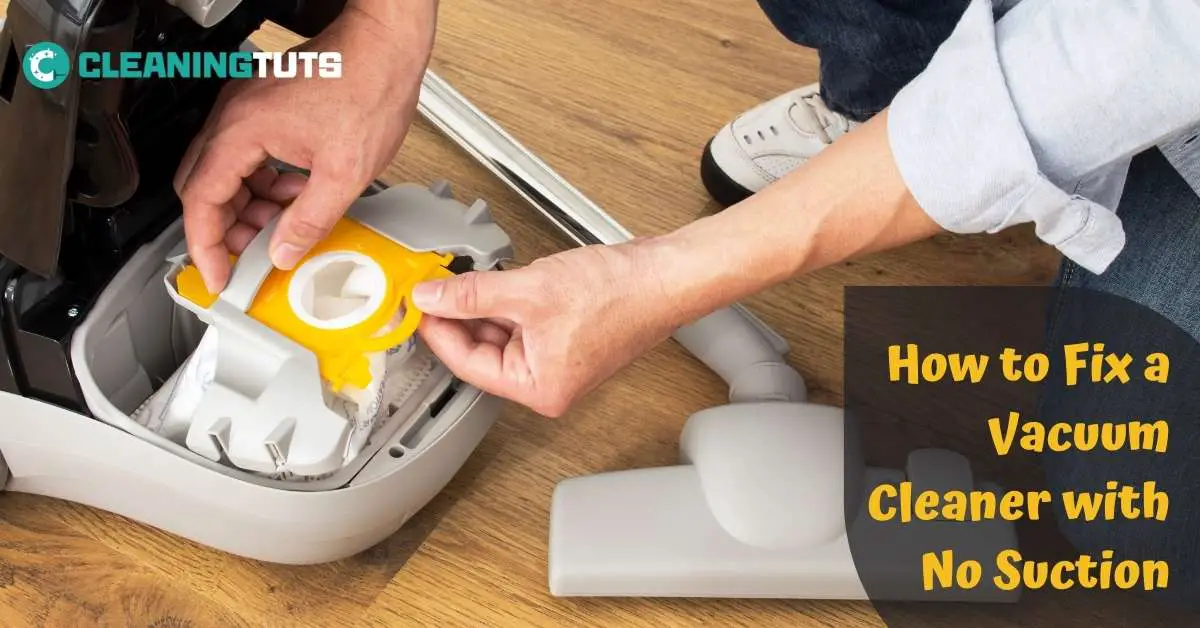How to Fix a Vacuum Cleaner with No Suction – Identification, Resolution, and Prevention
How many times have you tried to vacuum your house or car, and the vacuum cleaner just doesn’t seem to be picking up anything? This is a common problem, especially if your vacuum cleaner is old. In this blog post, we will teach you ways to identify and how to fix a vacuum cleaner with no suction power.
We will also discuss why it’s important to clean and maintain your vacuum cleaner and provide you with some tips and tricks that will help you avoid this problem in the future. Thanks for reading!
How to Fix a Vacuum Cleaner with No Suction – Identification and Resolving the Issue
There are a few vacuum manufacturers who claim that their product will never lose suction power and, therefore, never need to be fixed. They must be reading from a different manual than the one I’m looking at (ba-dum-truss) because almost every vacuum cleaner I’ve ever used has eventually lost suction power and needed to be fixed.
If your vacuum is having poor suction or has lost suction power completely, don’t despair. In this post, we’ve tailored everything you’ll need to know about your vacuum, identify the reason for the crisis and resolve it in a few easy steps. So, Let’s begin.
Check the Warranty of Your Vacuum Cleaner

First things first, check the manufacturer’s warranty to see if your vacuum is still covered. If it is, then you can take it to an authorized repair center, and they will fix it for you. If your warranty has expired, or if you bought your vacuum second-hand and don’t know if it has a warranty, then you’ll have to fix it yourself, but don’t fret.
Check the Manual
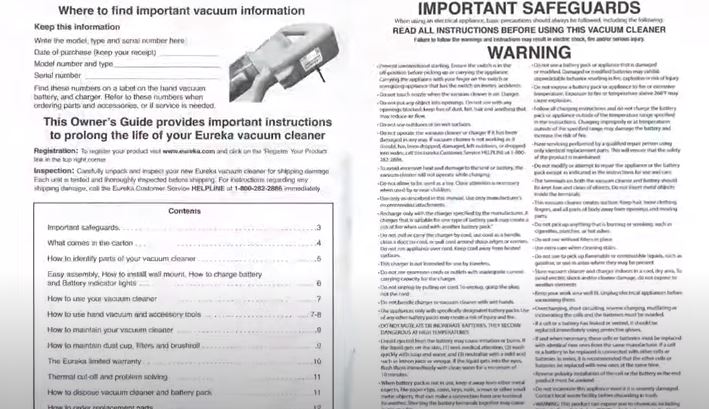
Check the manual that came with your vacuum.
Oftentimes, the manufacturer will list common problems and their solutions in the manual. If you can’t find the answer to your problem in the manual, then it comes down to DIY.
Check Your Vacuum Settings
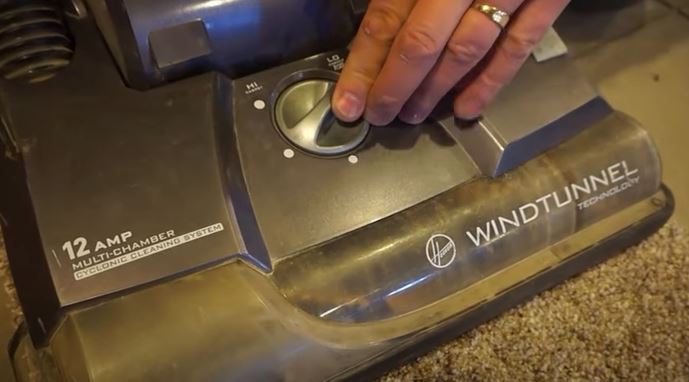
If you’re having vacuum suction problems, it’s most likely because of your vacuum’s height setting. You may be using the wrong height setting for your carpet. The setting is too low, causing the vacuum to miss dirt, or maybe the setting is too high, making the vacuum difficult to push.
Solution
The best way to avoid these common vacuum cleaner problems is to set the height of your vacuum properly.
- For carpet, hardwood floor, and tiles-based floor, the lowest setting is best. This allows the vacuum to get close to the ground and pick up all the dirt and dust.
- If you have a thicker carpet, you may need to raise the height slightly. But in general, the lowest setting is all you need.
Tip: If you’re not sure what setting to use, just go with the lowest setting, also known as the bare floor setting.
Inspect the Vacuum Cleaner Floorhead
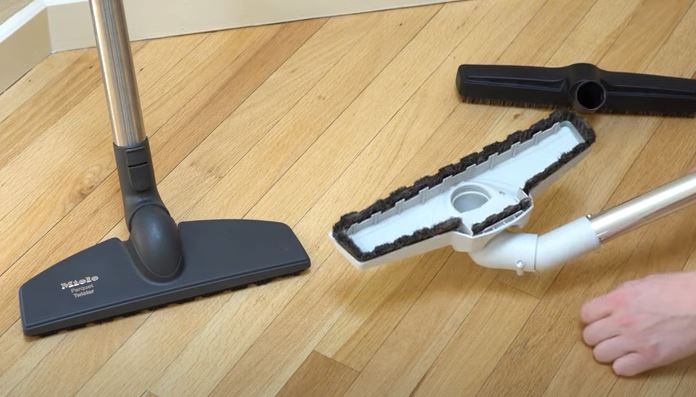
The most common cause of lost suction power is a blockage somewhere in the machine. The first place to check for a blockage is the floorhead.
If it’s covered in dirt and debris, that could be blocking the airflow and causing suction loss.
Solution
To clean a vacuum’s forehead, start with,
- Disassemble the floorhead from the vacuum cleaner.
- Check for any blockages in the suction path. If there are any blockages in the suction path, clear them.
- To do this, gently push objects such as hair or dirt backward through the suction hole until they are dislodged. Use a soft brush to dislodge any build-up.
- Once the blockage has been cleared, replace the floorhead and test the vacuum cleaner for suction.
- Reattach the floorhead to the vacuum cleaner.
If the floorhead has suction, then the problem is with either the hose or filter.
Inspect the Intake Port
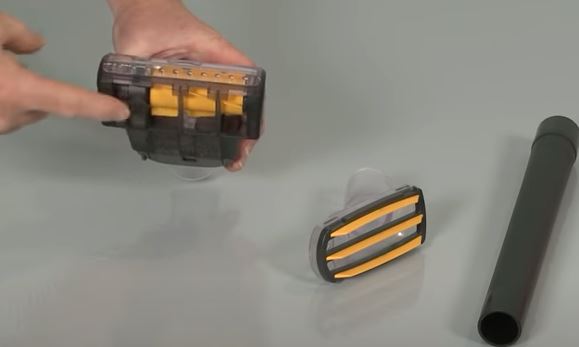
The second thing you should check is the intake port. The intake port is located at the bottom of the vacuum, where the dirt and debris are sucked into the machine. If this area is clogged, it will cause a decrease in suction power.
Solution
To clean the intake port, simply remove any debris that may be blocking it. You can also use a small brush to remove any build-up of dirt and dust.
If the intake port is clear and you are still experiencing suction loss, the next step is to check the vacuum’s filters.
Check the Hose Pipe
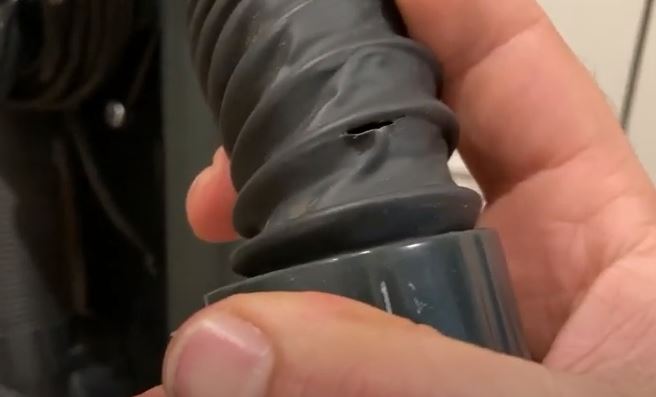
Cracked or damaged hoses are one of the most common reasons for a vacuum to lose suction power. If you suspect that your hose tube is damaged or broken, it’s important to check it for cracks or other signs of wear and tear.
To do this, start by disconnecting the hose from the vacuum cleaner. Then, inspect the hose carefully, looking for any cracks, holes, or other damage. If you find any damage, it’s best to replace the hose rather than try to repair it. But don’t worry, we got you if you want clean the hose anyway.
Solution
- Start by detaching the hose from the vacuum.
- Take a broom handle, put it inside, and keep going until you reach the other end of the hose pipe. This way, you can unclog the hose tube.
- Move forward to the sink and run water through the hose, you may use homemade solutions or detergent to get an even better result.
- Let it air dry for a few hours and re-attach it to the vacuum.
If suction is restored, then your vacuum hose was likely the culprit. Regularly checking your hose pipe for damage can help ensure that your vacuum always has strong suction power.
Check the Canister or the Dust Bag
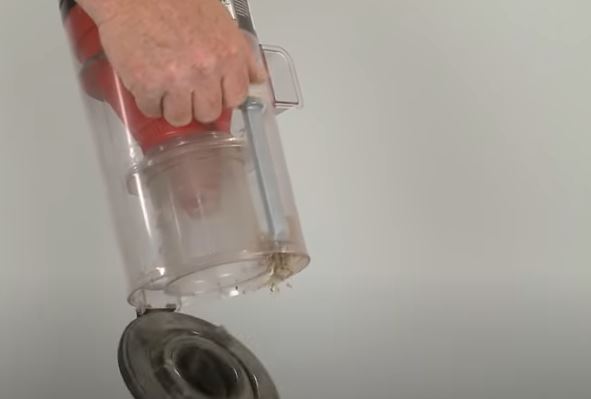
Most vacuum cleaners have a dust bag or dust container that needs to be emptied when it gets full. Depending on the model, these can be small or large capacities. There are also bagless vacuums, which have a dust container of small capacities that can be easily removed and emptied. Others have a vacuum bag that needs to be replaced when it gets full.
If the bag is allowed to fill up completely, it will reduce the vacuum cleaner’s suction power and cause it to work less effectively. Additionally, air will leak out of holes in these bagged vacuums, making them less efficient at capturing dust and dirt.
Solution
- First, never let it cross the fill line, empty before it’s full.
- Use a dirt sheet around the bag to protect the bag from wear and tear. (Avoid Glass suction)
- Keep it safe from wet things, place your vacuum in a dry place when not using.
Regardless of the model, it’s important to check the canister or dust bag regularly and empty it when necessary. And we encourage you to follow the instruction provided on how to empty the vacuum cleaner for a better understanding. It’s also important to maintain the filters and brushes of the vacuum cleaner to ensure optimal performance. Regularly cleaning or replacing these components can help prevent clogs and maintain suction power. Additionally, be mindful of the tide cleaning floor amounts to avoid overfilling the canister or dust bag, which can impede the vacuum’s ability to pick up dirt and debris efficiently.
Inspect Your Vacuum Filter
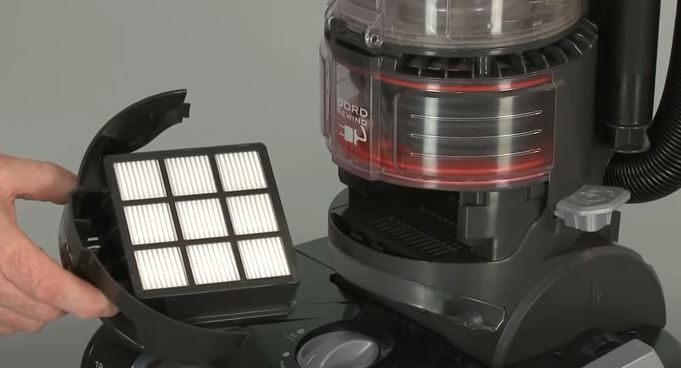
The vacuum cleaner’s filters are an important part of preventing suction loss. There are two filters in vacuum cleaners, the exhaust filter and the motor filter. The exhaust filter is located between the vacuum cleaner’s main body and the dustbin. It prevents dust and dirt from being recirculated back into the vacuumed area. The motor filter, on the other hand, protects the vacuum’s internal components by trapping fine dust particles before they reach the motor. Regularly cleaning or replacing both filters ensures optimal performance and extends the vacuum’s lifespan. Additionally, understanding proper maintenance can be just as important as learning how to vacuum stairs efficiently.
The motor filter is located inside the vacuum cleaner’s motor housing. It protects the motor from dirt and debris.
Check both filters for grime build-up; if the filter fails, then the vacuum fails.
Solution
- If your vacuum has a washable filter, it should be washed in cool water with a mild detergent every three months or as needed.
- If your vacuum has a two-filter system, it is recommended that you replace one of the filters every six months.
You can learn more detail about how to clean a vacuum filter from our site.
Check the Rotating Brush or Roller
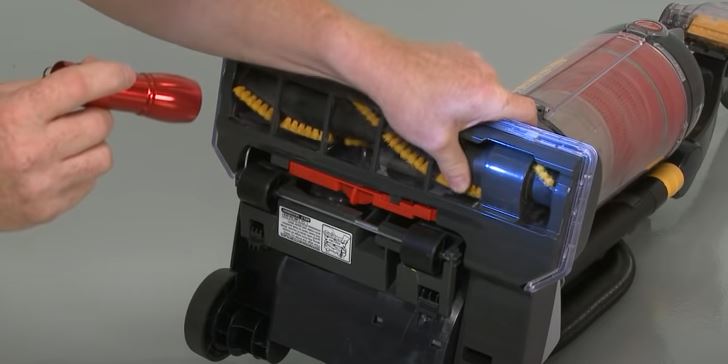
The brush roll of a vacuum cleaner is also known as the brush bar. It is the part of the cleaner that has the bristles that rotate and move back and forth. The vacuum’s brush roll is located at the bottom of the cleaner and is usually made of plastic or metal. The big difference between a brush and a roller is that a roller has bristles that rotate.
This action helps to loosen dirt and hair so that it can be vacuumed up more easily. If your brush roll is clogged with hair, it will not rotate correctly and fail to clean, and as a result, you get suction loss.
Solution
To clean a clogged brush roll,
- Start by cutting any hair or debris from the bristles with a scissor.
- Then, use a long stick to reach down into the crevice where the brush bar is located.
- Gently pull out any small pieces of dirt or hair that are caught in the bar by hand.
- Use a brush (toothbrush) to clean out the remaining dirt.
- Rinse off the brush bar with water to remove any lingering dirt or hair.
If you regularly clean your brush roll, it will help your vacuum cleaner to work more effectively and last longer.
Inspect the Vacuum Cleaner Belt
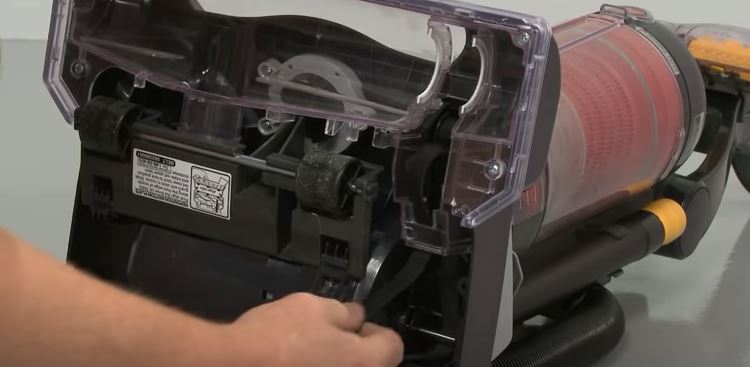
Many vacuums have a belt that helps to power the brush roll. Over time, this belt can become worn, which can cause suction loss. As a result, it’s important to inspect the vacuum belt regularly and replace it as needed.
Solution
To do this,
- First, unplug the vacuum cleaner and then remove the entire bottom plate.
- Next, locate the vacuum belt and inspect it for wear. If the belt is damaged, it will need to be replaced.
Once you have replaced the vacuum belt, reassemble the vacuum cleaner and test it to make sure that suction has been restored.
Seek Professional Help
Vacuum repair shops can diagnose the problem, and often they can fix it without having to replace the entire machine. So, if you’re having trouble with your vacuum, don’t despair- just take it to a vacuum repair shop and let the professionals take care of it; chances are you won’t have to buy a new vacuum cleaner.
Frequently Asked Questions
How do you increase vacuum suction?
There are several ways to increase vacuum suction. One is to make sure the filters are clean and in good condition. Another is to check that the bag or dust cup is properly attached and not full. You can also try using a vacuum cleaner with more powerful suction. Finally, make sure the hose and attachments are free of obstruction and clean them.
Are vacuums worth repairing?
Yes, vacuums are worth repairing. A vacuum cleaner with no suction can be a real hassle, but it’s usually an easy problem to fix. By identifying the cause of the lost suction and resolving it, you can get your vacuum back up and running in no time. Plus, regular cleaning and maintenance of your vacuum cleaner.
How do you install a suction cup?
You install a suction cup by attaching it to the desired surface. Make sure the surface is clean and dry before attaching the suction cup.
What happens when a vacuum filter is clogged?
When a vacuum filter is clogged, the suction power of the vacuum cleaner is reduced because the airflow is restricted. This can cause the vacuum cleaner to overheat and potentially damage the motor. In extreme cases, it may even cause a fire. It’s therefore important to clean and maintain your vacuum cleaner by replacing filters as needed.
How to fix a removable brush bar?
If the brush bar on your vacuum cleaner is removable, try cleaning it. Remove any hair or debris from the bristles and the metal shaft that the bristles rotate on. You can also try lubricating the metal shaft with light oil. And it would be best to teach yourself how to get the hair out of the vacuum because this will help you a lot in keeping your vacuum cleaner.
What is a spinning brush bar?
A spinning brush bar is a crucial floor tool for a vacuum cleaner. It helps to loosen dirt and debris from the floor so that the vacuum cleaner can suck it up. If the brush bar stops spinning, the vacuum cleaner will lose its suction power and be unable to clean properly.
Why does my robot vacuum stop cleaning?
If your robot vacuum cleaner has lost its cleaning power, there are a few things you can do to try and fix the issue. First, make sure that the battery is charged and that the robot is turned on. If it’s still not cleaning properly, check to see if there is any obstruction in the brush bar or if the filters are dirty. If the problem persists, you may need to contact the manufacturer for further assistance.
Final Words
So, you followed our guide on how to fix a vacuum with no suction, and it didn’t work. Well, congratulations- you are now officially qualified to take your vacuum to a professional repair shop! Just kidding, of course- anyone can do that. But seriously, if you’ve tried all of the tips in our guide and you’re still having trouble getting your vacuum to work properly, then it might be time to seek professional advice.

